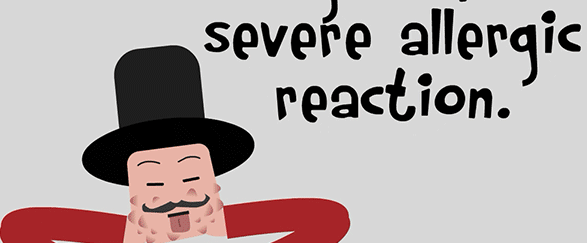New program teaching students to handle allergy emergencies
A spike in the number of WA students requiring emergency treatment for allergic reactions is behind a new St John Ambulance program teaching school children how to manage anaphylaxis.
Part of St John’s First Aid Focus initiative, the program teaches primary and high school students to identify the signs and symptoms of a severe allergic reactions, how to administer correct treatment and how to handle emergency situations.
The program was developed in response to a significant rise in the number of anaphylaxis-related emergency calls emanating from WA schools. Between January 2015 and December 2016, St John paramedics treated 66 students suffering severe allergic reactions – an 11 per cent increase on the previous year.
The statistics reflect a state-wide spike in allergy-related calls to triple zero (000), with WA paramedics treating 1,526 patients in 2016, up six per cent on 2015. Nationally, the number of people hospitalised with severe allergic reactions has more than doubled over the past decade.
St John Operations Manager Jae Smith said the First Aid Focus anaphylaxis program allowed students to recognise whether a friend may be suffering an allergic reaction and take action to help.
“We’re seeking to give students a base level of knowledge so that they know how to act if they or a friend suffer a severe allergic reaction,” Mrs Smith said.
“We know from a recent national survey that 85 per cent of adults don’t know the signs and symptoms of an allergic reaction, while 69 per cent are unaware of how to treat someone in an allergic emergency. Awareness is even less among children and this is despite nearly one fifth of the population having at least one allergic disease.
“Through this program we want to create a level of awareness at an early age because what students learn now can help to save a life whether it be in the playground, outside of school, or at any time the future.”
Anaphylaxis – the most severe form of allergic reaction – is life threatening. Common signs and symptoms include difficulty breathing, swelling of the tongue or throat, wheezing or coughing, and persistent dizziness. Triggers may include insect bites or stings, medication or an adverse reaction to foods, most commonly dairy products, nuts, eggs and seafood.

“St John’s school anaphylaxis program is age appropriate and 100 per cent free of charge,” Mrs Smith said.
“Sessions are hosted by trained youth engagement educators and can be delivered at school assemblies or to individual classes.
“The key point we want to get across is that anaphylaxis is serious and children should, as a first step, seek out an adult or teacher. If an adult is not nearby, they should call triple zero (000) as soon as possible and follow the lessons taught in the program.”
St John Ambulance’s First Aid Focus program has taught 600,000 WA primary and high school students basic first aid skills since 2008.
For more information or to book a free session with a St John Youth Engagement Officer, email: youth@stjohnambulance.com.au or call (08) 9334 1310.
